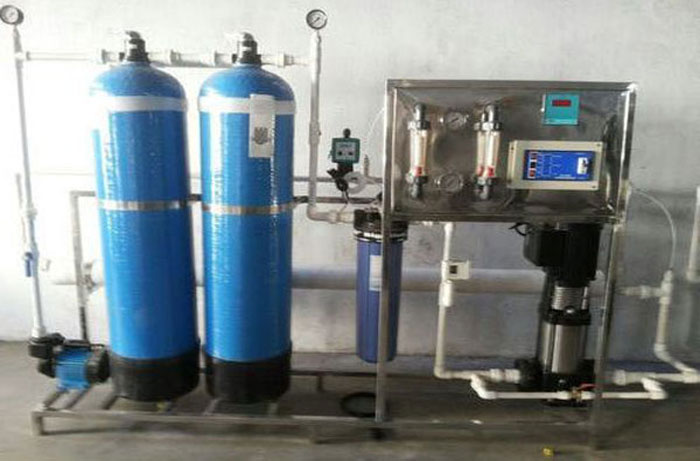Reverse Osmosis
 Reverse Osmosis
Reverse osmosis: process and applications
Reverse Osmosis
Reverse osmosis: process and applicationsThe best water treatment systems are all based on the reverse osmosis principle, especially to break down the nitrate content in the water. These are systems that, connected to the water network, remove a large part of the substances dissolved in the already drinking water; osmotic drinking water is, therefore, water with a very low fixed residue, like that of the purest mountain sources. There are many people who mistakenly believe that the reverse osmosis process is harmful to health because they think it depletes water, but this is only a prejudice based on reduced skills of the physical processes underlying this type of purification. In fact, too many people believe that osmosis systems deliver distilled water, i.e. deprived of any form of mineral salt, when in reality the result is water with a low fixed residue, therefore with a hardness and percentage of mineral salts equal to pure and light mountain springs, or as well as some famous bottled water, therefore very suitable for human consumption. Furthermore, for those who feel the need, a post-filter reminder is available for each model of reverse osmosis purifier capable of enriching the water again with mineral salts. Keep reading this article to know about the process and applications of the RO Plant in Pune. Reverse osmosis process How exactly does the interesting reverse osmosis process work? In practice, a semipermeable coil separates the two liquids from the different concentrations of solute, so the liquid tends to pass from a low to a high concentration zone according to a principle of chemical equilibrium. In this way, it is possible to separate sea or brackish water to make it drinkable: the water under pressure pushes the passage of seawater through the same membrane that allows the purification of the water, making it drinkable. The membrane used for this process is produced precisely to allow only the passage of certain molecules, excluding that of larger solutes such as salt ions. Reverse osmosis: characteristics and applications The RO plant by RO Plant Manufacturer in Mumbai is able to remove all the molecules and ions present in ordinary water, and for this reason, it is used in industry and in the production of drinking water. In practice, only the pure solvent passes through a semipermeable membrane, while the solute collects on the membrane itself. It is precisely this membrane; therefore, that selects the molecules and ions that can pass or not, not allowing this passage to all those larger molecules, while the smaller solvents can pass through it without problems. In the process of normal osmosis, the solvent passes from a zone with a low concentration of solute to one with a high concentration. The movement of the pure solvent tends to decrease the system’s free energy, which gives rise to osmotic pressure. Therefore, reverse osmosis is obtained by applying an external pressure to reverse the flow of the pure solvent. There are important differences between reverse osmosis and filtration: the latter tends to exclude molecules regardless of operational parameters such as pressure and concentration, while reverse osmosis generates a diffusive mechanism such that the separation of molecules and larger ions depend on the concentration of the solute, the pressure and the speed of the water flow. This is why reverse osmosis is used to purify seawater and make it drinkable, eliminating salt and other harmful elements. If in the past this process in which semipermeable membranes are used was only observed in the laboratory, it was soon possible to reproduce it in the laboratory to obtain drinking water by applying, in fact, asymmetrical membranes with a layer so thin as to act as a sort of ‘ filtering skin.




